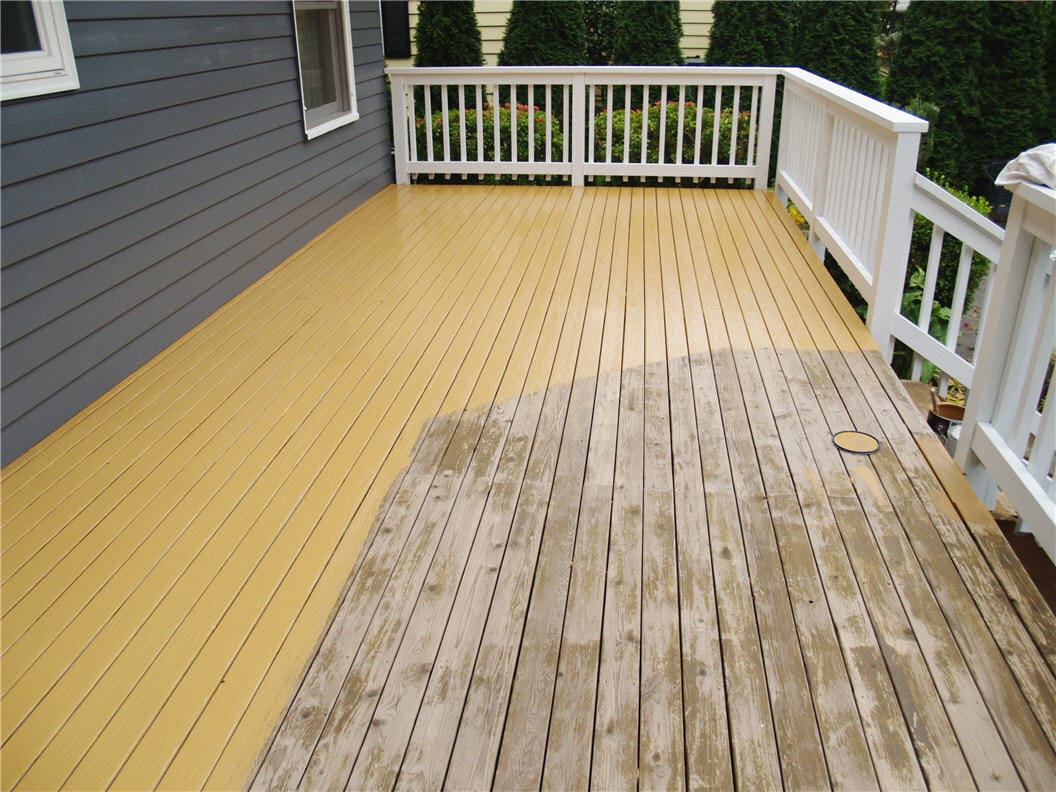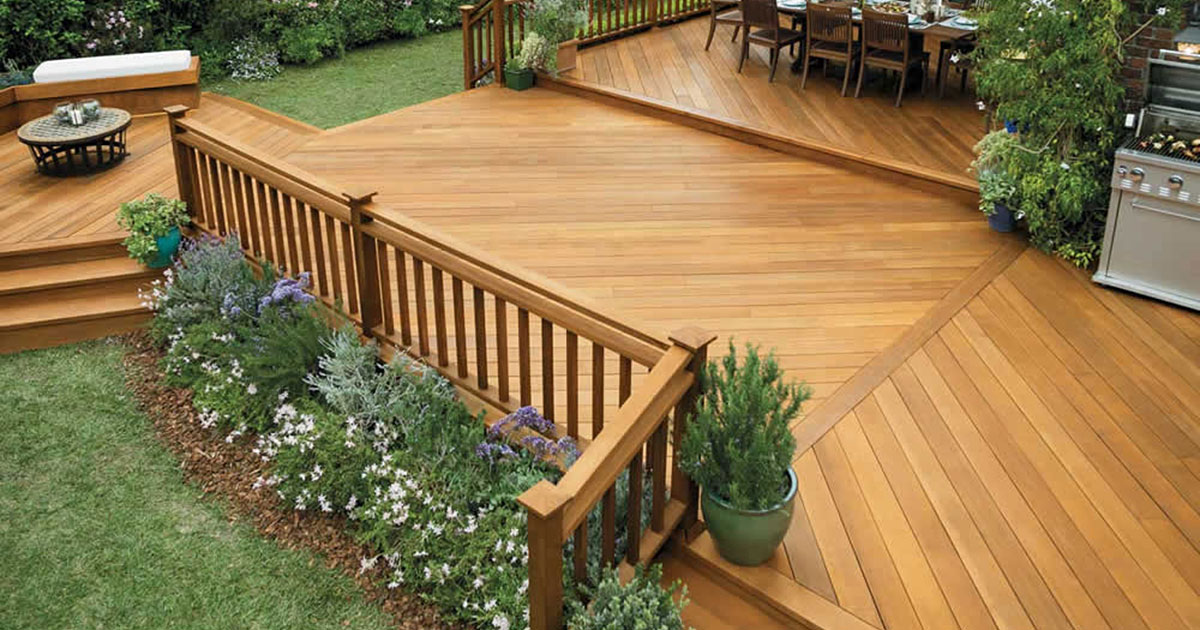Guardians of Wood: Fence Staining Masters at Your Solution
Wiki Article
Selecting the Right Discoloration for Your Fence: Tips and Factors To Consider
When it comes to maintaining and improving the look of your fence, selecting the ideal tarnish is essential. We will certainly discover the various kinds of fencing discolorations, elements to think about before selecting a discolor, ideas for preparing your fencing for staining, and the distinctions in between water-based and oil-based discolorations. Furthermore, we will dig into choosing the right discolor color to complement your fence and enhance your outdoor space.Recognizing Various Sorts Of Fencing Spots

On the other hand, water-based spots are made from acrylic or latex and use an extra subtle color to the wood. Water-based spots are simpler to clean up and have a quicker drying out time contrasted to oil-based discolorations.
Picking in between water-based and oil-based stains depends on different aspects, including personal preference, the desired appearance, and the degree of upkeep needed. Oil-based spots are suggested for fences in high-traffic locations or those frequently revealed to severe climate condition. fence staining and sealing. Water-based stains, on the other hand, are a prominent choice for fence houses where appearance and ease of usage are necessary
Understanding the distinctions in between oil-based and water-based stains aids home owners make an educated choice when choosing the appropriate stain for their fence. Considering the specific needs of the fence, such as its place, exposure to sunshine, and desired visual, will certainly ensure that the picked stain gives lasting defense and improves the overall appeal of the fence.
Aspects to Think About Before Picking a Stain

One more factor to consider is the sort of wood your fencing is made from. Different sorts of timber absorb discolorations differently, causing varying levels of shade strength and toughness. Softwoods like yearn may require more constant staining contrasted to woods like cedar or redwood. Furthermore, specific timbers might be more prone to problems like rot or insect problem, which might affect the option of stain to protect the fencing and safeguard.
The environment and climate condition in your location need to also be taken into account. If you reside in a location with rough winters or high humidity, you may need a stain that supplies additional security versus wetness and UV rays. Likewise, if your fencing is exposed to direct sunlight for extended periods, a discolor with UV inhibitors can assist avoid fading and discoloration.
Last but not least, it is very important to consider your wanted visual. Various discolorations use different colors and coatings, enabling you to customize the appearance of your fencing (fence staining and sealing). Consider the total style and style of your home, as well as any kind of regional policies or homeowner organization standards that might dictate the appropriate discolor shades
Tips for Preparing Your Fence for Staining
Cleansing the fence is a crucial action as it removes dirt, crud, and any previous coatings that may conflict with the discoloration process. Scrub the surface delicately, paying extra interest to locations with persistent stains or mold and mildew.This step is critical as discoloring a wet or damp surface area can lead to inadequate adhesion and an irregular coating. Ensure that the fence is completely dry before proceeding with the staining process.
Before staining, inspect the fence for any damages, such as loose boards or nails. Repair any type of issues to guarantee that the fence is structurally sound. Additionally, think about applying a wood conditioner or brightener to the surface. This product aids to open up the wood pores, allowing the stain to pass through extra successfully and uniformly.

Contrasting Oil-Based and Water-Based Discolorations
When selecting a stain for your fence, it is page vital to compare the features and benefits of water-based and oil-based discolorations. Both sorts of stains have their own benefits and considerations, so it is vital to recognize the differences between them.Oil-based spots are understood for their durability and resistance to tear and use. They permeate deeply right into the timber, giving superb defense against the elements. They also enhance the natural charm of the wood by highlighting its grain and appearance. Additionally, oil-based stains tend to last longer than water-based stains, making them a popular choice for fences.
On the other hand, water-based stains are more environmentally friendly and simpler to clean up. They have a lower VOC (unpredictable natural substance) material, which indicates they launch less dangerous fumes right into the air. Water-based stains also completely dry faster, allowing for a quicker application and less downtime. However, they might not give the exact same level of defense as oil-based discolorations, specifically in extreme weather problems.
Ultimately, the selection in between water-based and oil-based stains relies on your particular demands and preferences. Take into consideration elements such as sturdiness, environmental effect, and ease of application when making your choice. Consulting with an expert or seeking referrals from experts can likewise aid guarantee that you pick the right tarnish for your fencing.
Choosing the Right Discoloration Color for Your Fence
The choice of a suitable discolor shade for your fence is a crucial facet of enhancing its visual allure and complementing the general style of your exterior space (deck cleaning). The best tarnish color can change a plain, normal fence right into a striking prime focus that includes deepness and character to your propertyWhen selecting a stain shade for your fence, it is essential to think about the design and design of your home. If you have a traditional or typical style home, natural tones such as browns and neutrals can produce a cozy and inviting appearance. On the other hand, if you have a contemporary or contemporary home, you could take into consideration choosing for vibrant and vibrant colors that make a declaration.
An additional element to think about is the all-natural environments of your building. If you have a great deal of greenery, a stain color that matches the all-natural landscape, such as greens or deep reds, can produce a cohesive and harmonious look.
Additionally, it deserves taking into consideration the upkeep needed for various tarnish shades. Lighter shades tend to show dirt and use more quickly, while darker colors can hide flaws and call for much less constant touch-ups.
Inevitably, the selection of tarnish shade for your fencing need to reflect your personal style and choices - fence staining companies. Take the time to discover various alternatives and speak with with experts if required, to guarantee that you choose the excellent tarnish shade that enhances the beauty and charm of your fence
Final Thought
In verdict, when it comes to selecting the best stain for your fence, it is vital to recognize the different kinds of discolorations offered and consider factors such as resilience and desired look. Selecting the appropriate discolor color can boost the overall visual appeals of your fence.We will certainly explore the various types of fencing stains, variables to think about before choosing a tarnish, suggestions for preparing your fencing for discoloration, and the differences in between water-based and oil-based stains.Differentiating in between oil-based and water-based spots is important when understanding various kinds of fence discolorations. Water-based discolorations are much easier to cleanse up and have a quicker drying out time compared to oil-based discolorations. Furthermore, oil-based discolorations have a tendency to last longer than water-based spots, making them a popular option for fencings.
In final thought, when it comes to picking the best tarnish for your fence, it is crucial to understand the different kinds of stains offered and consider elements such as durability and desired look.
Report this wiki page